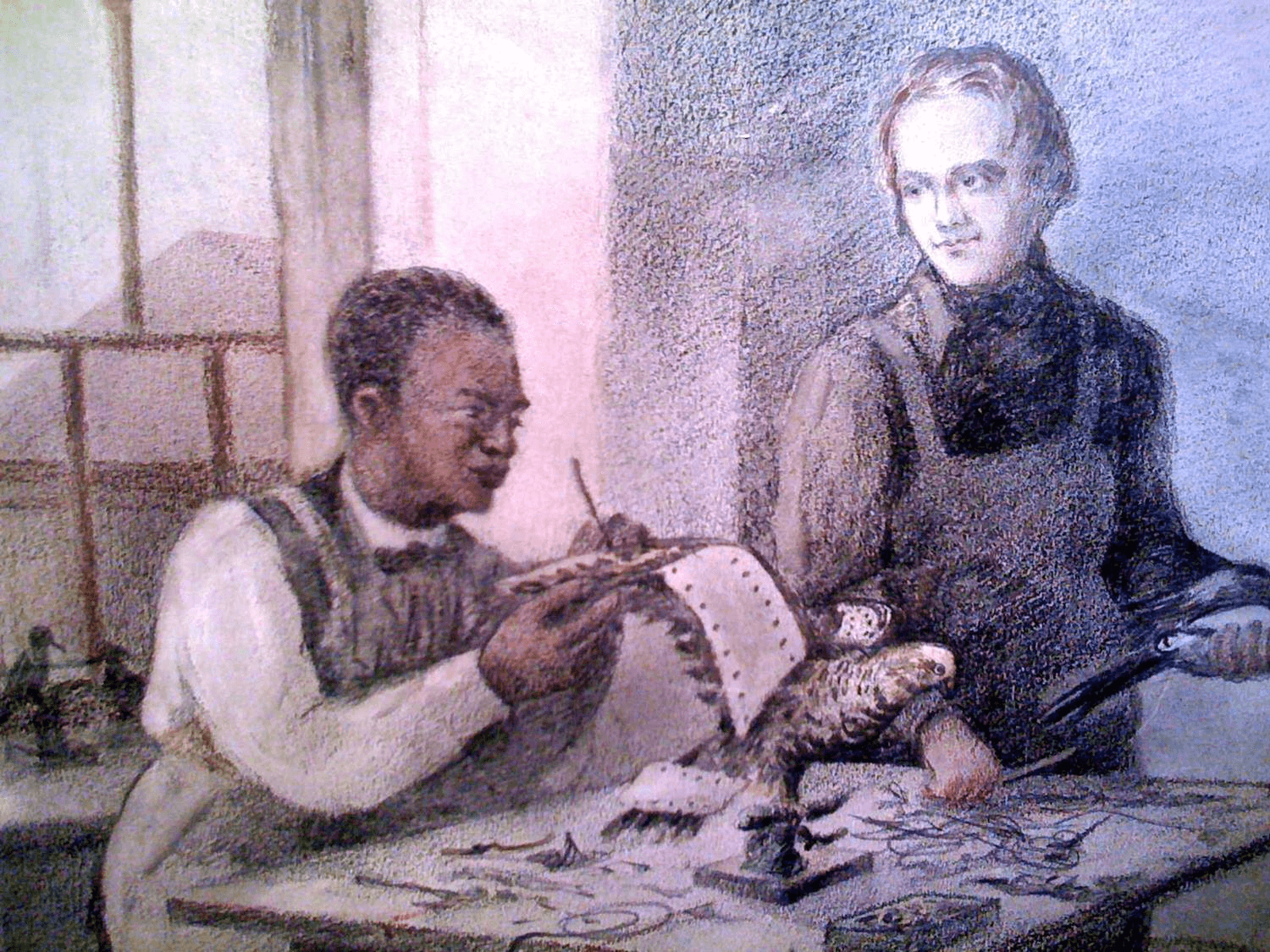Edinburgh
Let's face facts: young Charles was not a great student at Edinburgh university. He wrote letters home complaining about his boring professors. But he wrote with excitement about one of his teachers, who happened to be the only Black instructor at Edinburgh. John Edmonstone had been born enslaved in South America. He learned how to preserve animals from the plantation owner's son-in-law, who took Edmonstone with him on a trip to Scotland 1817. But slavery had been illegal in Britain since 1807, so John was freed. He opened a taxidermy shop next to Edinburgh. In 1826 a 17 year old student, Charles Darwin, took lessons there 5 days a week. He not only learned the skills that would become crucial to his life's work, but became fascinated by John's stories of tropical South America, encouraging his interest in becoming a naturalist. (Note that to make the game less confusing, we made it look like John's taxidermy lab was part of one big building: not true, at the time all the classrooms were spread out around the neighborhood).

Darwin found most of his classes dull, but he was fascinated by the public speakers and debates, especially those from abolitionists in the fields of medicine and biology. Graduating from Edinburgh a few years before Darwin arrived, James Cowles Prichard's Types of Mankind proposed that all humans were descended from an original group in Africa. George Combs, Robert Grant and other Edinburgh professors had proposed ideas about how humans might have changed over time, opposing the slave owners' ideas of humans as fixed "lower" and "higher" species with separate origins. In 1846 famed African American speaker Frederick Douglass came to Edinburgh to raise money for the abolitionist cause. He reported that meeting men of science who believed in racial equality “relieved my path of many shadows”.
